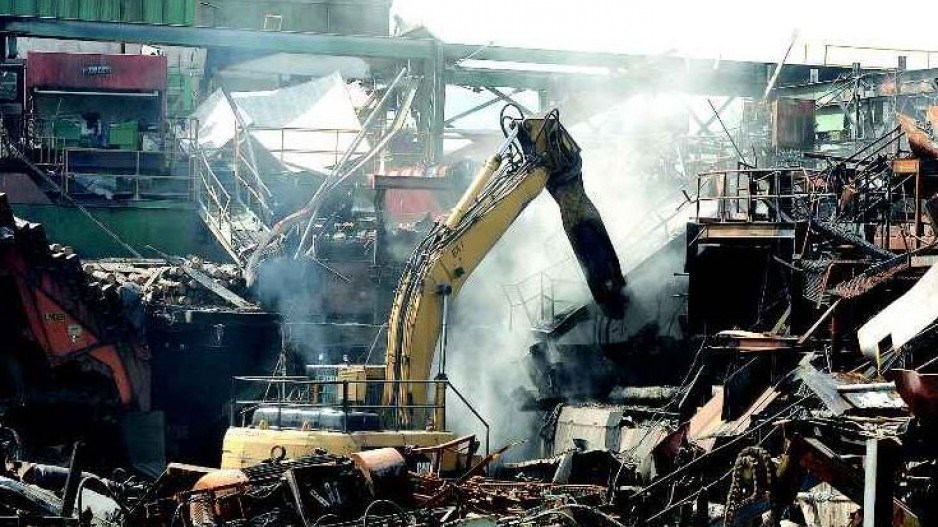As the two-year anniversary of a deadly sawmill explosion in Prince George nears, the union representing B.C.'s forestry workers says toothless safety regulations mean that workers are still in danger.
"Until all of British Columbia's sawmills are operating under the same standards, then workers are still at risk," Bob Matters, chair of the United Steelworkers Wood Council, told Business in Vancouver.
In a joint statement on sawmill safety and compliance released by the B.C. government today, WorkSafeBC is committing to double the size of its inspection team and launch another phase of its sawmill inspection initiative.
The statement also says that WorkSafeBC "is currently reviewing its Occupational Health and Safety Policy with a focus, at this stage, on high-risk violations and the consequences for non-compliance."
In a March 4 report on sawmill dust inspections, WorkSafeBC said it had issued 13 temporary stop-work notifications over a three-month inspection period. Two worksites were issued stop-work notifications a second time and are being closely monitored by the safety authority.
Matters, who is a signatory to the joint statement, said enforcement needs to be tougher and all sawmills need to be operating under the same, mandatory rules.
Matters said it should not have taken this long to get standards in place, but signing the joint statement is an important step. He believes progress can be made within a month's time to get tougher rules and consequences in place.
An explosion and fire levelled the Lakeland Mill in Prince George on April 23, 2012, killing two workers and injuring 22. It followed a similar explosion and fire at a sawmill in Burns Lake in January 2012, which killed two mill workers and injured 20.
WorkSafeBC's investigation report for the Burns Lake fire identified accumulations of sawdust as the most likely cause of the explosion. That report also said the accident was preventable, had the dust been cleaned up more regularly.




